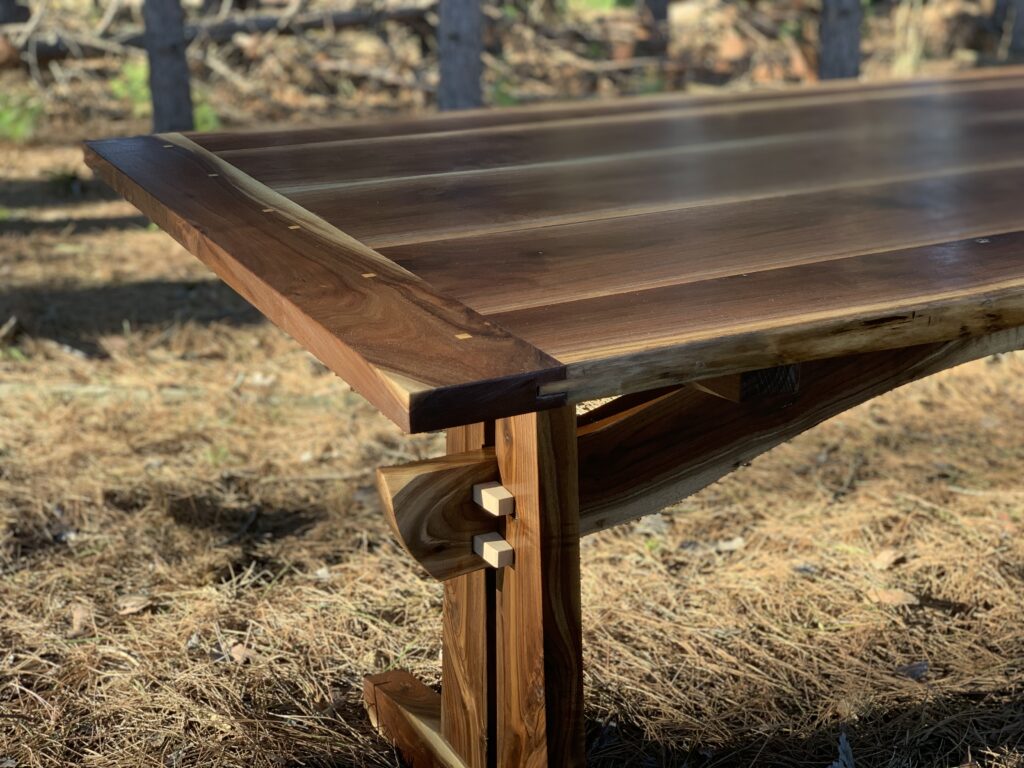

Handcrafted Woodworking
Enger Grove is an artisan wood shop located in the pine forests of Bemidji, Minnesota.
Craftsman John Enger applies his aesthetic eye and old world techniques to everything from timber frame cabins to custom furniture and kitchen gear such as rolling pins and cutting boards.
Enger Grove is committed to longevity. A well-built timber frame will stand for lifetimes — the same is true of a kitchen table or butcher block. We apply the same ethic to sourcing materials. Much of our lumber is sustainably harvested by John in accordance with a long-term forestry plan to keep our grove healthy. It’s milled on our Amish-built sawmill and the scrap heats our shop.
Products

Timber Frames

Kitchen

Furniture
Why Custom Furniture?
Be Truly Original
When you buy custom furniture, you’re entering into a process of creation — imagining something totally new, and watching it become real. John crafts each piece to match the client’s vision and his own. The resulting objects are purely yours — brought to life in solid wood and beautiful, functional joinery.
John makes tables, headboards, baby cribs, rocking chairs, stools & more. Have an idea? John will make it a reality.




Services

Custom Sawmilling

Furniture Repair

Home Highlights
Ancient Techniques
So much of humanity’s woodworking knowledge has been lost. John is passionate about carrying on what remains.
Learn More
Hand Hewing — Before easy access to saw mills, builders hewed square timbers from whole logs, with axes. It’s brutal work, but leaves a lovely surface on the timber. It feels, under your fingers, like ripples on a lake on a calm day. Hew enough timbers and you will gain tremendous respect for lumber. You will waste nothing.
Shou Sugi Ban — Many of these old techniques center around wood preservation. In years past, craftsman thought as much about future generations as the currently living. They wanted their buildings to stand. Shou Sugi Ban is a Japanese term for a heat treatment that radically extends the life of wood. The surface was charred, which hardened the wood and also left behind a layer of ash to repel insects. These days a propane torch makes the process easy and satisfying.
Ring Barking — Another preservation technique requires more forward thinking. Centuries ago in Norway, craftsmen would damage the bark of pine trees a little at a time, over several years, tricking the tree into saturating itself with rot-proof pitch. Then, the year before felling the tree, they’d remove all the bark and sap wood in a ring around the base. The pitch-saturated tree would dry on the root, becoming almost like stone. Many of the oldest surviving wooden structures were built with trees harvested in this way.

Hand Hewing

Shou Sugi Ban

Ring Barking
